Achievements
Awards
Nobel Prize in Physiology or Medicine

- The discovery that mature cells can be reprogrammed to a pluripotent state(2012)
YAMANAKA Shinya(Director, Center for iPS Cell Research and Application (CiRA), Kyoto University) - < Relationship with JST >
-
- Translational Research for Intractable Immune Disorders and Infectious Diseases
“Generation of Ideal Pluripotent Stem Cells for Clinical Applications” Research Director (2003-2008) - Yamanaka iPS Cell Project
Research Director (2008-2012) - Core Center for iPS Cell Research
“Center of Excellence in Development of iPS Cell Stock for Regenerative Medicine” Center Director (2013-)*
*This research project has been transferred to the Japan Agency for Medical Research and Development as of April 1, 2015.
- Translational Research for Intractable Immune Disorders and Infectious Diseases
iPS cells are pluripotent stem cells that can differentiate into any cells that make up the human body, such as bone, heart, liver, nerves, and blood. We have established a technology to initialize cells and transform them into iPS cells by introducing a few factors into cells of already differentiated skin and blood. We will continue to promote the realization of regenerative medicine using iPS cells through the production of high-quality iPS cells, and contribute to innovations such as investigation of the causes of intractable diseases and drug screening.

Producing human iPS cells (*initial method)
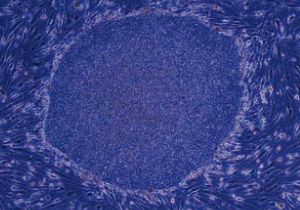
iPS cells derived from human skin cells
Provided by : Center for iPS Cell Research and Application
Nobel Prize in Physics
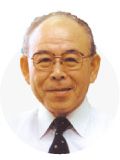
- The invention of efficient blue light-emitting diodes which has enabled bright and energy-saving white light(2014)
AKASAKI Isamu(Professor at Meijo University, Professor Emeritus and Distinguished Professor at Nagoya University) - Toyoda Gosei Co., Ltd
- < Relationship with JST >
-
- Development of Creative Technology Seeds, Contract Development
“Manufacturing technology of GaN blue light emitting diodes” Representative Researcher / Developing and implementing company (1987-1990)
- Development of Creative Technology Seeds, Contract Development
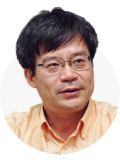
- AMANO Hiroshi(Professor at Nagoya University)
- EL-Seed Corp.
- < Relationship with JST >
-
- Development of Creative Technology Seeds, Contract Development
“Manufacturing technology for LED moth-eye structure” Representative Researcher / Developing and implementing company (2007-2010)
- Development of Creative Technology Seeds, Contract Development
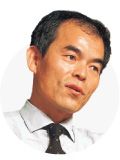
- NAKAMURA Shuji(Professor at the University of California, Santa Barbara)
- < Relationship with JST >
-
- ERATO “NAKAMURA Inhomogeneous Crystal project” Reserch Director (2001-2006)
The 2014 Nobel Prize in Physics was awarded to Prof. Isamu Akasaki, Prof. Hiroshi Amano, and Prof. Shuji Nakamura, who invented high-efficiency blue light emitting diodes(LEDs). Blue LED was said to be difficult to put into practical use, and “It is impossible to realize it in the 20th century”. Under these circumstances, focusing on the potential of gallium nitride, we succeeded in producing high-quality single crystals and pn junctions, as well as for the first time in the world the realization and commercialization of high-brightness blue LEDs. Blue LEDs lead to the commercialization of high-intensity and energy-saving white light sources, and can also provide lighting to places without transmission facilities. In addition, it contributes to energy saving in the world, and is widely applied to society in information processing, transportation, medical care, agriculture, etc.
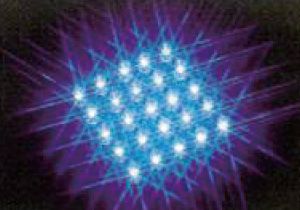
Blue light-emitting diode
